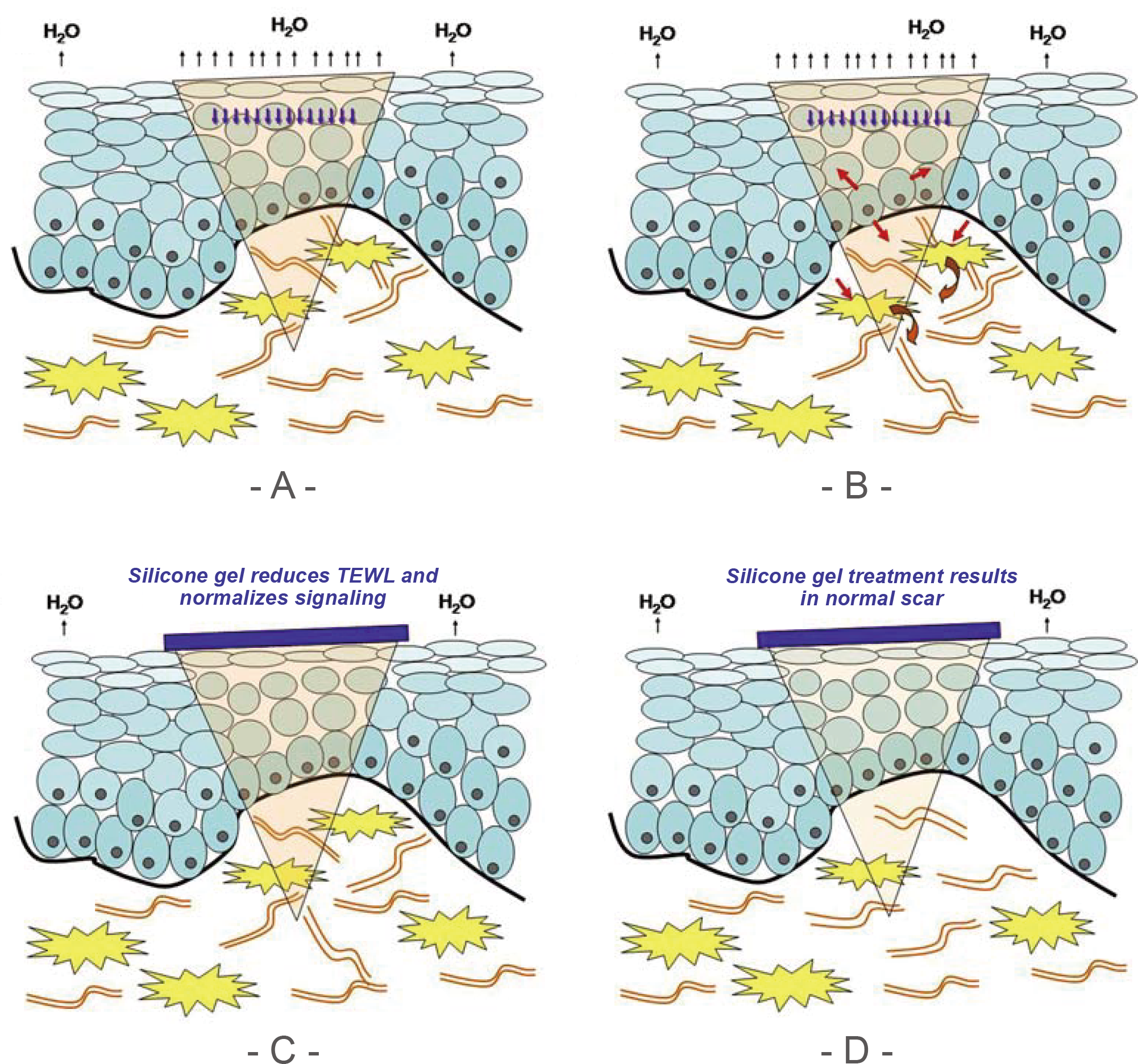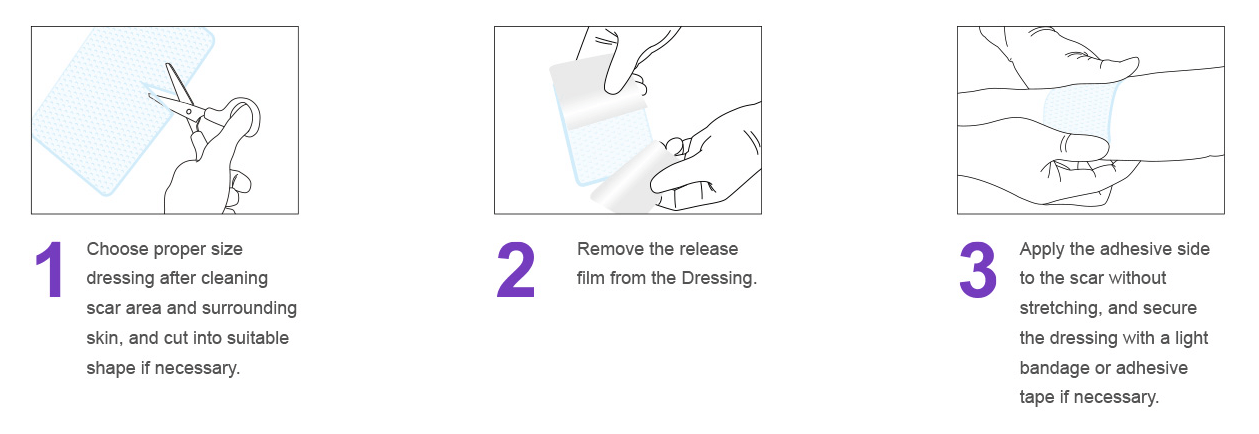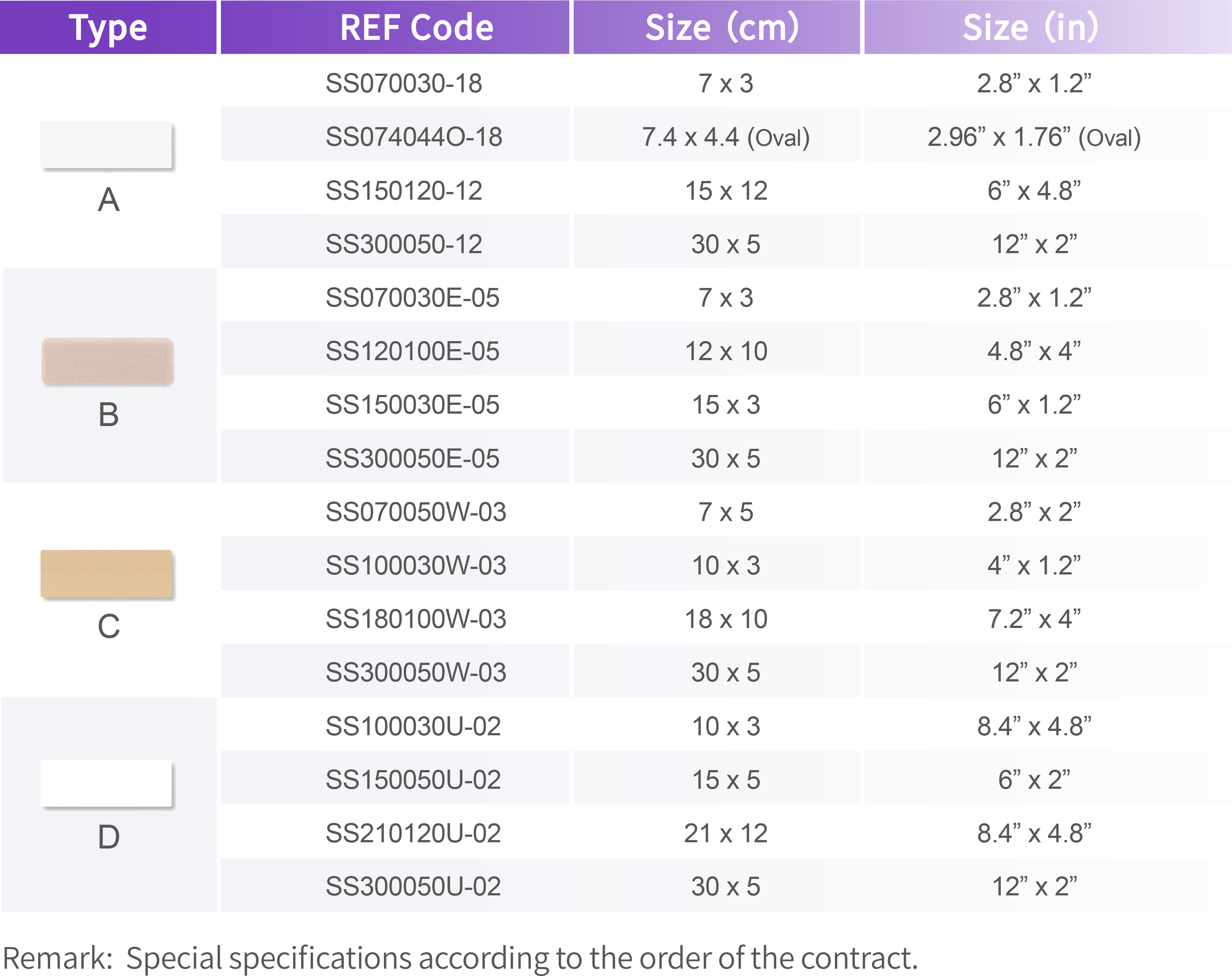
Product Description
Outstanding corrective treatment for hypertrophic and keloid scars
LUOFUCON® Silicone Gel Scar Dressing is a kind of soft, thin, reusable and self-adhesive silicone gel sheet. It is mainly made from silicone. It is effective for the management of both existing and new hypertrophic or keloid scars and as a prophylactic treatment on closed wounds to prevent hypertrophic or keloid scarring. But do not use on open wounds.
Product Characteristics
Durable & Elastic
Cost effective with longer use of this durable and elastic dressing. Easy application with clear observation.
Regain Beauty
Give the patients chance to regain beauty with the ability of preventing scar formation.

Mechanism

The mechanism of action of silicone-based products in scar management has not been completely determined, but the beneficial effects of SGS on scars are not mediated by pressure or by changes in oxygen tension or blood flow. Similarly, the effects likely are not attributable to silicone release and entry into scar, because biopsies of scars treated with SGS have shown no evidence of a foreign body reaction. An increase in skin surface temperature could be involved because the skin surface temperature of hypertrophic burn scars under SGS is increased by 1.7℃, and temperature increases of this magnitude can significantly increase collagenase activity and could affect scarring. Development of a static electric field also may be involved, because it has been proposed that the negative static electric field generated by friction between SGS and the skin could cause collagen realignment and result in the involution of scars. In fact, cushions consisting of a silicone occlusive covering filled with silicone oil provide a stronger static electric field than SGS and are at least as effective as SGS in normalizing excessive scars. However, there is no evidence currently that the static electric field produced by silicone products causes changes in the extracellular matrix of scars.

A. At 1 to 2 weeks after wounding, reepithelialization is completed, but the stratum corneum is immature and allows abnormally high levels of TEWL. Dehydration of the stratum corneum is signaled (bluearrows) to keratinocytes, perhapsvia an osmotic gradient.
B. Keratinocytes are stimulated to produce cytokines (redarrows), which in epidermal-dermal signaling activate dermal fibroblasts to synthesize and release collagen. Excessive collagen production leads to abnormal scarring.
C. Treatment of the reepithelialized wound or the scar with silicone gel restores the barrier function of the stratum corneum, reducing TEWL and turning off the stimulation of keratinocytes. Keratinocytes stop producing cytokines that activate dermal fibroblasts.
D. After 2 to 3 months of silicone gel treatment, collagen deposition has normalized, and there is no scar hypertrophy.*
How does Silicone Gel Scar Dressing work?
Various shapes, sizes and backing colors meet different needs;
Durable, comfortable and re-usable;
Provides elastic protection to the sensitive skin from impact of physical and chemical stimulation;
No irritation, low intensity of skin sensitization.
Indications
For external use only. Temporary use in the management of both existing and new hypertrophic or keloid scars. Temporary use as a prophylactic treatment on closed wounds to prevent hypertrophic or keloid scarring. Do not use on open wounds.
Contraindications










































